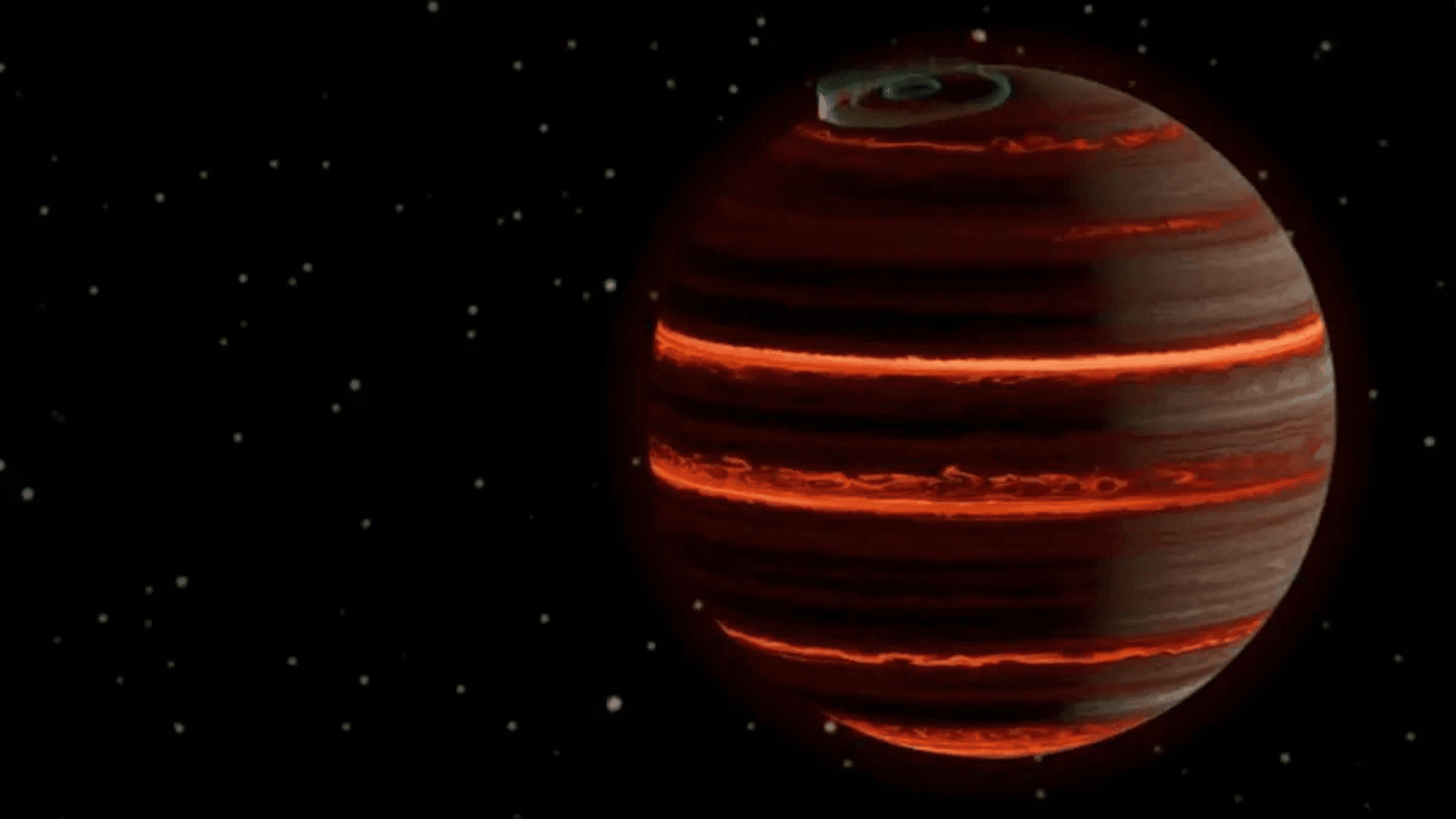New observations from the James Webb Space Telescope show a distant world with no sun that glows with auroras brighter than Earth’s northern lights.
JWST Captures a ‘Rogue World’

The world is called SIMP-0136 and it’s roughly 20 light-years away. The 200-million-year-old world isn’t technically a planet; it’s a brown dwarf – a celestial body that blurs the line between a star and a gas giant planet.
Sometimes referred to as “failed stars”, astronomers don’t know for sure how brown dwarfs are formed. They could form like a planet, due to the accretion of material in a protoplanetary disk, or they could form like a star, due to the contraction of gas.
They never grow large enough to sustain a nuclear fusion reaction in their core, meaning they cannot be classified as a star. They host planets and emit light, much like a star, but they also have auroras and atmospheres with storms, like a planet.
SIMP-0136 is a ‘rogue world’, meaning it’s freely floating through space and not within a star system.
A team of scientists used the James Webb Space Telescope to track changes in SIMP-0136’s atmosphere as it performed a full rotation. The study reveals shifts in temperature, cloud cover, and changes in chemistry as SIMP-0136 rotated.
“These are some of the most precise measurements of the atmosphere of any extra-solar object to date, and the first time that changes in the atmospheric properties have been directly measured,” study lead author Evert Nasedkin of Trinity College Dublin explained in a press statement.
During the study, the team analyzed a layer of air roughly 570 degrees Fahrenheit (300 degrees Celsius) warmer than their models had predicted. Auroras most likely cause this extra heat.
Whereas Earth’s auroras are caused by solar wind interacting with the planet’s magnetic field, scientists believe SIMP-0136’s auroras are caused by charged particles flying through interstellar space. The intense auroras are due to SIMP-0136’s magnetic field, which is much stronger than that of Earth.
Rogue worlds provide researchers with the opportunity to study a celestial body without stellar radiation from host stars, which allows for more detailed studies of the world’s atmosphere and temperature. The new findings are published in the journal Astronomy & Astrophysics.


